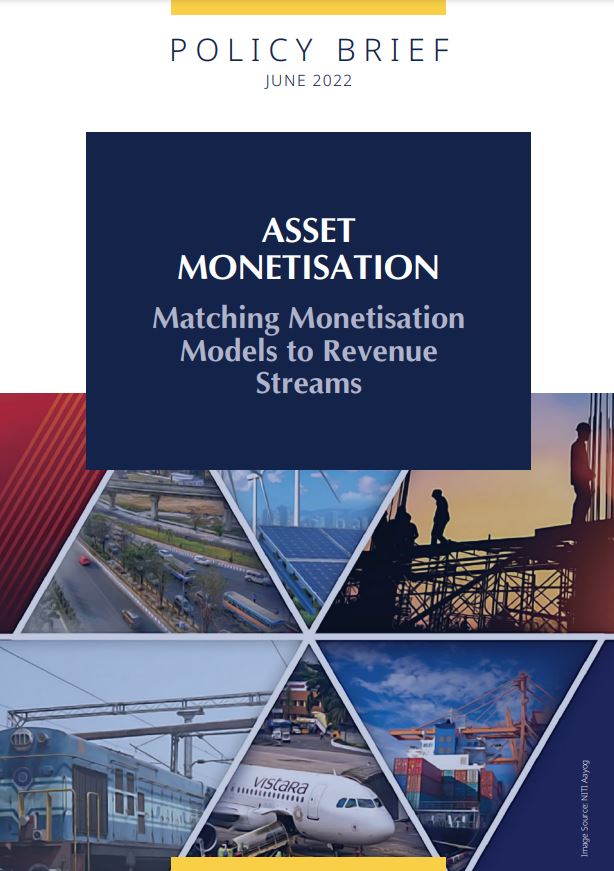The NITI Aayog released the National Monetisation Pipeline (NMP) in July 2021 (NITI Aayog 2021) as part of a pool of innovative and alternative financing sources expected to fund about 15 to 17 per cent of the National Infrastructure Pipeline, which is targeted at `111 trillion over five years, i.e., `22 trillion annually, i.e., about £ 220 billion. Of this, asset monetisation is expected to contribute about ` 6 trillion or about £ 60 billion over FY 22 to FY 25.
In 2021-22, the budget projected revenue from privatisation, listing, etc. of ₹ 1.75 trillion but the revised estimates expected to raise about ₹ 0.78 trillion. The estimate for 2022-23 is lower, at under ₹ 0.7 trillion. However, not all monetisation receipts will be on budget since some of the assets are owned by non-departmental and/or corporate entities, and revenues would accrue to them, separate from the budget. For example, the resources raised by monetising existing transmission service agreements of Powergrid would be extra budgetary.
Figure 1 shows the expected shares of monetisation revenue by sector. In 2021-22, the government was on target, reporting ₹960 billion (about £ 9.6 billion) in monetisation revenue. Of this, roads were about 24%, power about 10%, and mining about 61% of which coal mining generated over 41%. These include 390 km of road in InvIT and three toll-operate-transfer (TOT) concessions, transmission assets of PowerGrid and an operational hydel project of NHPC, 22 coal blocks and 31 mineral blocks.
The ongoing conflict in Ukraine could lead to adjustments to the asset monetisation program. It impacts the demand for assets in multiple ways, viz. (a) a reduced demand for emerging market assets (b) a possible switch from riskier to safer assets domestically and, for the private sector (c) a possibly reduced appetite for investment (anticipating a slower growth outcome, driven by challenges of high oil prices and reduced ability of government to provide stimulus), which in turn would reduce the the private sector’s need to monetise assets to fund new investments. As such, the increase in risk premium may affect realisations and it behoves us to consider the effects of risk on ways to monetise assets.

